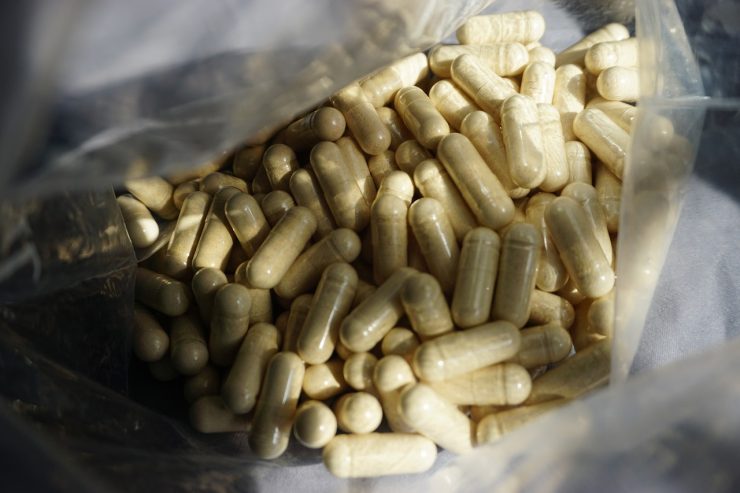Maca, Libido, and Fertility—Does It Actually Work?
Maca has earned a reputation as a natural way to boost libido and support fertility—and there’s some real science behind it. Grown in the rugged high-altitude regions of Peru, maca root has been used for centuries as both food and traditional medicine. It’s often referred to as “Peruvian Ginseng,” though it’s technically a cruciferous vegetable, related to broccoli, kale, and cauliflower.
Today, maca is considered a superfood thanks to its impressive nutrient profile and wide range of potential benefits. While it’s rarely eaten raw, it’s commonly consumed in powdered form, capsules, or extracts.
Beyond Libido: What Maca Offers
Maca root isn’t just known for its effects on the bedroom. It’s also linked to better energy, mood, memory, and immune support. Nutritionally, maca provides 20 amino acids, healthy fatty acids, B vitamins, vitamin C, vitamin E, and minerals like calcium, magnesium, iron, potassium, and zinc. It’s also rich in plant compounds such as polyphenols and glucosinolates—phytonutrients with known antioxidant properties.
Maca, Libido, and Fertility
When it comes to increasing sexual desire, maca has shown promising results in several human studies. In a double-blind, placebo-controlled study, men who took maca for 12 weeks reported a noticeable increase in sexual desire after just 8 weeks. Another study found that maca helped improve libido in individuals taking antidepressants—medications often linked to a reduced sex drive.
Additional research on athletes found that higher doses of maca not only increased libido but also supported better physical performance. These effects have been observed in both men and women.
In terms of fertility, maca may help improve sperm count and motility. Some studies have also linked maca to improvements in mild erectile dysfunction. Interestingly, despite these benefits, researchers haven’t observed changes in testosterone or estrogen levels—suggesting maca may support sexual health through other mechanisms.
Different types of maca may offer different benefits. Black maca appears to be the most effective for sperm production, while red maca has been studied for its ability to reduce prostate enlargement (BPH) and may help protect against prostate cancer.
Benefits for Women’s Health
Maca isn’t just for men. It’s also been shown to help with hormone balance in women, particularly during PMS, menopause, and in conditions like PCOS. One study published in Menopause found that maca helped improve mood, reduce anxiety and depression, and increase libido in menopausal women. Other research suggests it may support ovulation and overall reproductive health by improving egg follicle development.
Women have also reported improvements in hot flashes, sleep issues, and vaginal dryness with maca supplementation.
Energy, Mood, and Brain Function
Many people take maca for its energizing effects. It’s often compared to caffeine—but without the jitteriness. Maca has been linked to better stamina, improved mood, and greater focus. Some of these effects may come from its support for the adrenal glands, thyroid, and blood sugar balance.
In Peru, maca has traditionally been given to children to support learning and memory. Recent studies suggest black maca, in particular, may help improve cognitive function.
Antioxidant Power and Athletic Performance
Maca contains antioxidants that support the body’s defense against oxidative stress, including glutathione and superoxide dismutase (SOD). These antioxidants may help protect against inflammation, chronic disease, and even unhealthy cholesterol levels.
Athletes often turn to maca for support with energy, muscle building, and recovery. While it doesn’t appear to raise testosterone levels, it may still enhance endurance and reduce muscle soreness—possibly due to its antioxidant content and overall nutrient profile.
How to Use Maca
Traditional Peruvian diets sometimes include up to a pound of maca per day, but most people don’t need anywhere near that much. In studies, typical daily doses range from 1.5 to 5 grams.
Maca is widely available as a powder, in capsules, or as a liquid extract. Yellow maca is the most common, but red and black varieties may offer more targeted benefits. When shopping for maca, look for products labeled 100% maca, ideally raw and organic.
Its earthy, nutty flavor pairs well with chocolate, nuts, and smoothies. It’s easy to mix into oatmeal, energy bars, coffee, and baked goods. Some even use it in pancake or waffle batter.
Important Considerations
While maca is generally safe for most people, there are a few precautions to keep in mind:
-
Hormone-sensitive conditions: Those taking hormone-altering medications (such as for breast or prostate cancer) should consult a healthcare provider before using maca.
-
High blood pressure: Individuals with hypertension should use caution.
-
Thyroid issues: Maca contains goitrogens, which may interfere with thyroid function if consumed in large amounts.
-
Pregnancy and breastfeeding: More research is needed to determine maca’s safety during pregnancy or nursing.
-
Preparation: Some traditional sources suggest boiling maca root before consumption, as raw maca may cause digestive discomfort or other issues in some individuals.











